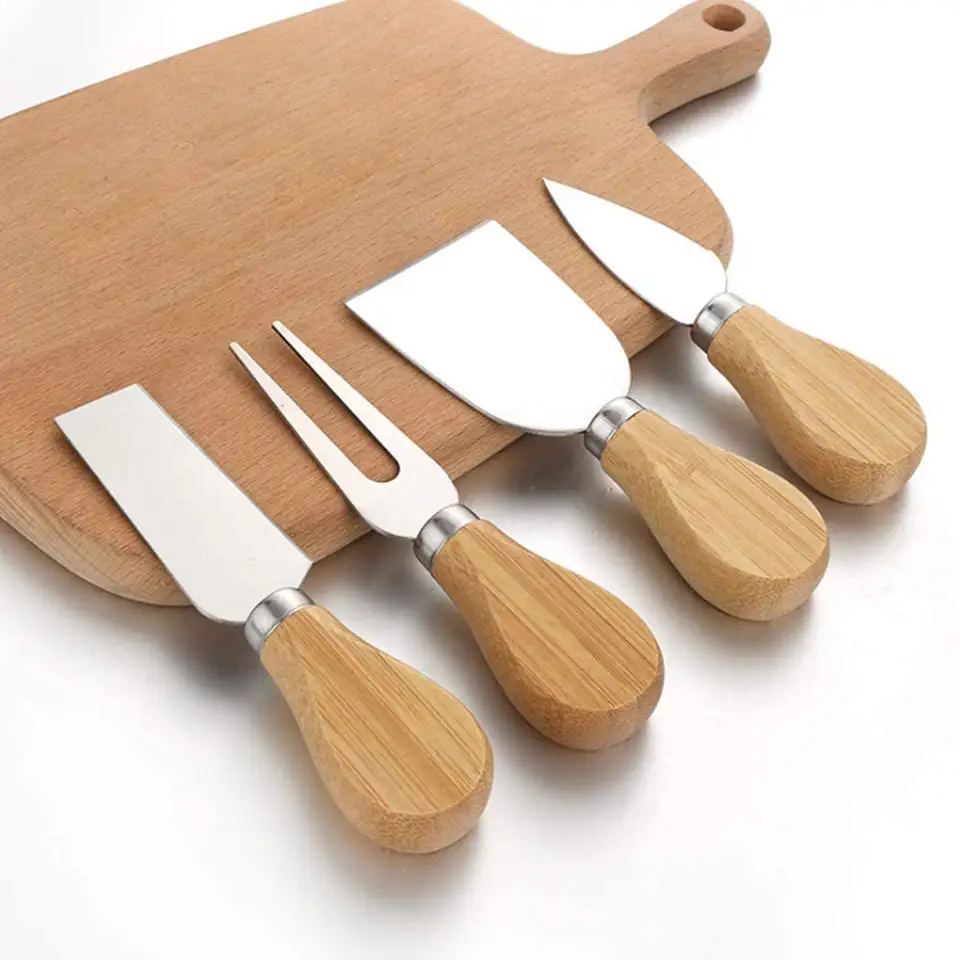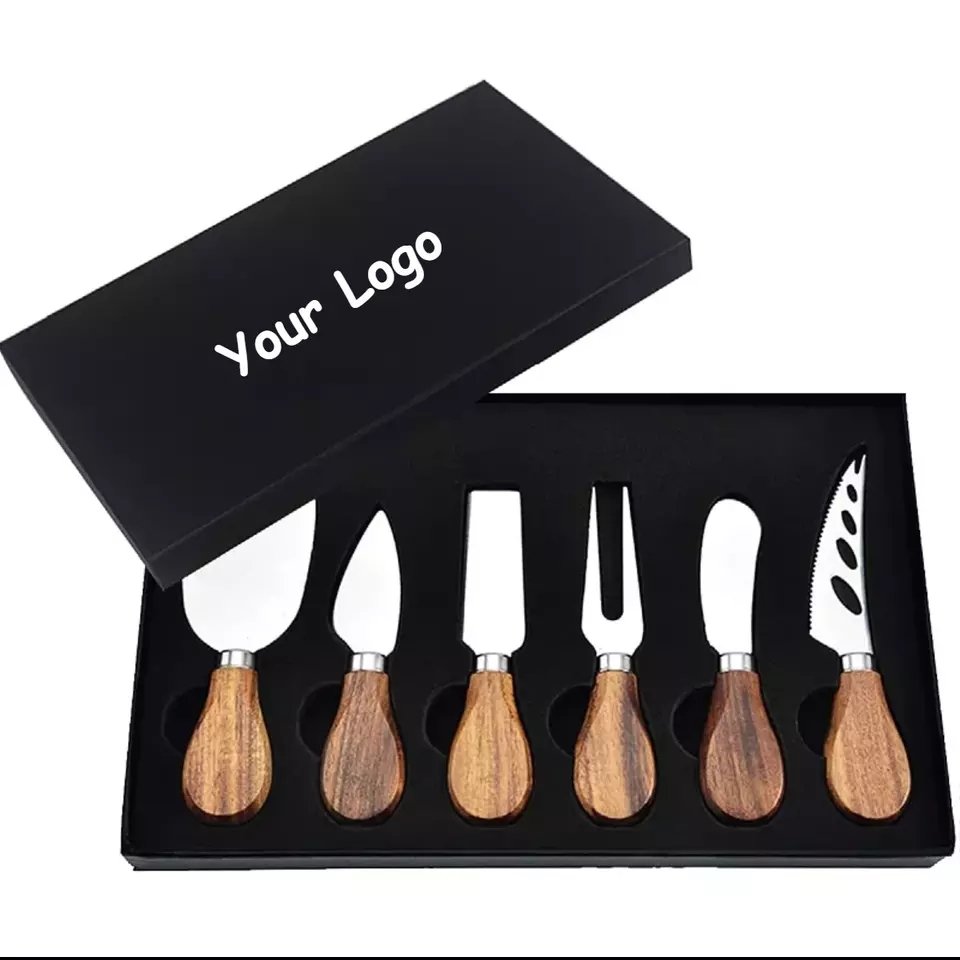You want high-quality cutlery, but you’re torn between the prestige of German manufacturing and the proven performance of Chinese factories.
China offers consistent quality, customization, and affordability. Germany focuses on legacy craftsmanship but at higher costs and less flexibility.
Germany has long been seen as a symbol of precision engineering. But in today’s fast-moving market, is tradition still your best bet? Let’s break it down.
Table of Contents
Is German-made cutlery really better?
Some say “Made in Germany” is a gold standard. But is that still true today?
German cutlery is prized for engineering excellence, but modern Chinese factories can now deliver comparable results—at much lower prices.
Craftsmanship vs. Scalability
German cutlery has a legacy rooted in meticulous craftsmanship. Brands like WMF or Zwilling pride themselves on centuries of expertise. However, modern-day demand often values scale and flexibility more than artisanal perfection.
In contrast, Chinese manufacturers invest heavily in advanced machinery, quality control systems, and workforce training. I’ve personally hosted clients from Europe who were surprised by how high our QA standards are—from tensile testing to salt-spray cycles.
| Comparison Factor | Germany | China |
|---|---|---|
| Craftsmanship | Hand-finished details, artisan touch | Industrial precision with human QC |
| Technology | Precision engineering, slower to change | Fast tech adoption, smart factories |
| Customization | Limited, high cost | Highly flexible, cost-effective |
| Delivery Speed | Slower due to smaller scale | Faster through mass production systems |
| Cost | Premium pricing | Value-for-money across all quality levels |
Real World Application: What Customers Actually Need
Most hotel or restaurant clients I deal with don’t need 10 artisans polishing each fork. They need reliable, durable, and affordable tools that ship on time. That’s exactly where Chinese cutlery thrives.
And let’s be honest—if a $20 fork and a $2 fork perform the same after 100 washes, which would you choose?
Is it cheaper to manufacture in China or Germany?
This one might seem obvious—but let’s spell it out.
Manufacturing cutlery in China costs significantly less due to labor, infrastructure, and raw material advantages.
Why China wins on cost without sacrificing quality
Germany’s high wages, environmental regulations, and energy costs add up. That’s great for sustainability goals, but not so great for your margin.
Meanwhile, China has streamlined everything—from steel procurement to logistics integration. We work with clusters of suppliers within 20km of our factory, which cuts cost and speeds up every step of the process.
| Cost Category | Germany | China |
|---|---|---|
| Labor Cost | High (avg. $35–$45/hr) | Moderate (avg. $3–$8/hr) |
| Raw Materials | Imported or high-tier local | Abundant local stainless steel |
| Energy | Expensive and eco-regulated | Substantial but often subsidized |
| Logistics | Fragmented, high export dependency | Integrated hubs, port proximity |
| Sample & Mold Cost | Very high setup fees | Competitive or waived for bulk orders |
Not Just Cheap—Efficient
One thing many overlook: in China, it’s not just the *cost* that’s lower—it’s the *time to market*.
When a client needs urgent modifications, we can prototype new samples within 3–5 days. In Germany, this might take 2–3 weeks or more due to longer internal approval cycles and less automation.
Which offers better quality control: Germany or China?
People often associate German goods with strict quality control. But China’s manufacturing has evolved far beyond the outdated “cheap and low quality” stereotype.
China’s quality control is standardized, tech-driven, and often certified by international systems—just like in Germany.
Certifications and Audits
Both Germany and China adhere to strict QA standards, but the way they apply them differs. In Germany, many processes rely on legacy protocols and manual checks. In China, automation plays a key role, alongside third-party audits.
My factory is BSCI-certified, and we regularly undergo inspections by SGS, TÜV, and Bureau Veritas. Most of our clients—from Europe to the US—demand LFGB, FDA, and DGCCRF compliance, and we deliver.
| Quality Element | Germany | China |
|---|---|---|
| ISO Certifications | Common | Common (ISO 9001, ISO 22000, etc.) |
| Audit Frequency | Periodic | Pre-shipment + random + annual audits |
| QC Process | Manual + semi-auto | Automated + data-logged + traceable |
| Compliance with Regulations | EU-focused | Global (EU, US, Japan) |
| Customer Feedback Loop | Slower | Fast iteration and customization |
On-the-ground Story
I remember once a European client was worried about whether our knives would pass EU food-contact migration tests. I immediately arranged pre-shipment testing and provided SGS reports. The client was shocked that we even had a UV disinfection tunnel at the packing line.
German factories are great—but they’re not the only ones taking QA seriously.
Is "Made in Germany" still a global advantage?
That label used to carry serious weight. But in today’s globalized market, does it still give you an edge?
“Made in Germany” has heritage value, but for many B2B buyers, “Made in China” means faster lead times and better margins.
Market Psychology vs. Procurement Logic
There’s no doubt—German branding still resonates in consumer markets, especially in premium kitchenware. But in wholesale and B2B, practicality often beats prestige.
Clients from the Middle East, Southeast Asia, or South America often care more about delivery lead time, MOQ flexibility, and after-sales support than about the country-of-origin badge.
| Decision Factor | Germany | China |
|---|---|---|
| Brand Prestige | Strong in Western consumer markets | Rising reputation in B2B sectors |
| Flexibility | Low (fixed MOQs, fewer customizations) | High (low MOQs, rapid prototyping) |
| Lead Time | Slower (8–12 weeks typical) | Faster (3–6 weeks standard) |
| Support & Responsiveness | Formal, slow escalation | Fast response, 24/7 support in many firms |
| Value-for-Money | Lower due to cost | High with optimized sourcing and labor |
Personal Client Case
One of our Australian clients told me, “We used to buy from Germany for our luxury cutlery line, but honestly, our buyers couldn’t tell the difference. What they noticed was the price.”
That shift from “perceived” value to “actual” value is happening across the board.
What are the differences in cutlery materials used in Germany vs. China?
Not all stainless steel is the same. The question is—who’s using it smarter?
Germany often sticks to traditional grades like 18/10, while China offers both standard and custom alloys depending on use-case.
Grade Variety and Use Cases
In Germany, many cutlery items are made using 18/10 stainless steel (304 grade), known for its corrosion resistance and durability. It’s excellent—but expensive.
Chinese factories use the same grades, but also offer 18/0, 13/0, and even proprietary blends for specialized uses like magnetic flatware or anti-bacterial surface treatments.
We even collaborate with local steel mills to produce low-nickel stainless blends for clients with allergy concerns—something many German firms won’t customize.
| Material Type | Germany | China |
|---|---|---|
| 18/10 (304) | Standard for premium brands | Common, but not the only option |
| 18/0 | Rarely used | Popular for cost-effective, non-nickel lines |
| Proprietary Blends | Limited | Customizable on request |
| Anti-Bacterial Tech | Limited innovation | Emerging options in food-grade coatings |
| Magnetic Properties | Low diversity | Flexible for induction and magnetism needs |
Smart Choices for Smart Buyers
It’s not about downgrading materials. It’s about **matching** the right material with the right application. That’s what smart sourcing looks like today—and China makes that easier.
How do German and Chinese factories handle design customization?
You might assume German design teams are unmatched. But when it comes to real-world flexibility and speed, Chinese manufacturers often lead the race.
German manufacturers stick to fixed catalog models, while Chinese factories offer broader customization with quicker response times.
Who really listens to your ideas?
German design is often product-driven—engineered to perfection before it even reaches the market. That’s great in theory. But what if you want to tweak a handle shape? Or adjust logo positioning?
In my experience, Chinese factories—especially those doing OEM/ODM—offer far more flexibility. We’re used to design briefs changing mid-process. Our teams work directly with clients to iterate quickly.
I remember once, a Middle Eastern client wanted an Islamic calligraphy engraving added to the spoon handle. Our in-house team produced three mock-ups within 48 hours. This kind of agility is difficult for more rigid German workflows.
| Design Factor | Germany | China |
|---|---|---|
| Customization Availability | Limited (due to tooling and legacy process) | High (flexible molds, CNC engraving, etc.) |
| Design Iteration Time | 2–4 weeks for samples | 3–5 days typical |
| Client Collaboration | Low (often indirect via distributor) | High (direct factory-to-buyer) |
| Cultural Adaptability | Moderate | Very High (export-focused) |
| MOQ for Custom Designs | Often high (1,000+ sets) | Flexible (even 100–200 sets for trial) |
A Practical Perspective
Design is not just about art. It’s about listening. And that’s where we, as Chinese manufacturers, excel. We’re not stuck in the past—we’re tuned in to what global buyers need *now*.
Are German or Chinese suppliers more responsive to bulk buyers?
In B2B wholesale, time is money. And suppliers who respond faster keep your business moving.
Chinese manufacturers provide faster quotes, flexible terms, and 24/7 communication support. German suppliers are more formal and less agile.
It’s more than replying emails fast
Responsiveness is about how quickly a factory can handle changes in orders, urgent delivery requests, or new compliance documents.
We’ve had clients send revised laser engraving files just hours before production. Because we keep digital workflow systems and in-house toolrooms, we accommodate these last-minute changes—no drama.
German manufacturers? They’re reliable, yes. But they tend to operate within rigid schedules. Lead times are rarely shortened. Design files go through long internal approvals. That’s not ideal when you’re dealing with real-time retail cycles or seasonal promotions.
| Responsiveness Factor | Germany | China |
|---|---|---|
| Response Time to RFQ | 2–5 business days | 24–48 hours typical |
| Flexibility in MOQs | Fixed and firm | Negotiable, especially on repeat orders |
| Custom Order Changes | Discouraged post-approval | Common, if within mold/tooling window |
| Communication Channels | Email, limited phone support | Email, WhatsApp, WeChat, Video Calls |
| Weekend/Off-hour Support | Rare | Common with dedicated account reps |
The B2B Realities
One of my Turkish clients—let’s call her Lisa—once told me: “I love how I can message you on a Sunday and get a reply. I don’t get that from Europe.”
And that, honestly, is what makes buyers stay.
What are the environmental standards in both countries?
Environmental responsibility is critical. But how it’s enforced and practiced varies greatly between Germany and China.
Germany enforces stricter environmental rules, but many Chinese manufacturers—like us—are catching up fast through green certifications and upgraded equipment.
Regulation doesn’t always mean performance
Germany has strong laws around energy consumption, wastewater, and emissions. But compliance often comes with high costs—passed on to the buyer. Some factories in Germany still use traditional setups that are technically compliant but not particularly innovative.
Meanwhile, many Chinese manufacturers, especially in the export sector, are now integrating green production lines. I’ve visited polishing shops with water recycling systems, solar-powered warehouses, and chromium-free electroplating setups. We also work toward RoHS and REACH compliance in every batch we export to Europe.
| Environmental Factor | Germany | China |
|---|---|---|
| Law Strictness | High | Moderate to High (regionally varied) |
| Green Certifications | Standardized | Increasing (ISO 14001, BSCI, SEDEX, etc.) |
| Tech Adoption in Green Areas | Slow and expensive | Faster and cost-conscious |
| Waste & Water Management | Regulated | Actively improving with newer factories |
| Buyer-Requested Audits | Common | Encouraged and documented |
Cleaner and Smarter
Let’s not forget—factories in China want long-term clients. And no serious buyer tolerates environmental shortcuts. That’s why we’ve invested heavily in compliance systems *before* problems happen.
Which country makes the best cutlery?
It’s the million-dollar question buyers love to ask—but the answer depends on what “best” really means for your business.
Germany leads in legacy craftsmanship. China leads in scalable, customizable, and efficient production—making it the practical choice for modern buyers.
Define “Best”: Performance? Price? Customization?
In high-end consumer markets, brands like WMF or Zwilling are household names, often associated with premium cutlery. But in the wholesale space—hotels, retailers, promotional campaigns—the definition of “best” changes.
For many of our B2B clients, the top priorities are:
– Can the cutlery last through 300 dishwashing cycles?
– Will the logo engraving fade?
– How fast can I get 10,000 sets delivered?
That’s where Chinese manufacturers shine. We match technical specs while offering flexibility, shorter lead times, and lower costs.
| Dimension | Germany | China |
|---|---|---|
| Brand Prestige | High in retail | Rising in wholesale B2B |
| Technical Specs | Excellent | Excellent, with faster iteration |
| MOQ and Lead Time | Fixed, longer | Flexible, shorter |
| Design Customization | Limited | Extensive and efficient |
| Price-Value Ratio | High price, stable value | High value, better ROI |
Real Customer Perspective
I had a UAE client once say, “We love German products, but we *grow* our profit with Chinese ones.”
That says it all.
Is Made in Germany better than Made in China?
Historically, yes. But manufacturing has changed, and China is now setting new standards.
“Made in Germany” represents tradition and prestige. “Made in China” represents speed, flexibility, and strategic value.
Global Supply Chain Shifts
Decades ago, “Made in China” meant cheap. Now it means **optimized**. From robotic polishing lines to automated quality inspection stations, our factories are no longer “behind”—they’re often ahead.
Germany still offers excellent finishing work and timeless design, but Chinese manufacturers offer a full-package solution: design, prototyping, compliance, packaging, and shipping under one roof.
| Production Element | Made in Germany | Made in China |
|---|---|---|
| Reputation | Premium legacy | Modern industrial powerhouse |
| Production Workflow | Sequential, slower | Parallelized, lean |
| Manufacturing Cost | High | Medium to low |
| Service Scope | Often factory-only | Full supply chain solution |
| Innovation Cycle | Slow | Fast + responsive to global trends |
What Buyers Are Choosing Today
It’s not about nostalgia. It’s about agility and scalability. And in both areas, China now delivers—without compromising quality.
What is the difference between German and Chinese steel?
Steel quality is key to cutlery performance. So what sets these two apart?
Germany uses standard high-grade stainless steel. China offers both the same and more diversified grades based on function and cost-efficiency.
Both Use 18/10. But Only One Offers Choice.
Both countries use SUS304 (18/10) for premium cutlery. But German producers often stick to this one grade. In China, we use 18/10, 18/0, 13/0, and even create custom compositions for specific use cases.
This makes Chinese manufacturers far more versatile. Need nickel-free forks? We offer them. Want magnetic knives for induction trays? We’ve got them. Need anti-corrosion coatings for salty air environments? We can do that too.
| Steel Property | Germany | China |
|---|---|---|
| Common Grade | 18/10 only | 18/10, 18/0, 13/0, mixed alloys |
| Source of Steel | Mostly EU-based | China domestic (TISCO, Baosteel) + import |
| Custom Blends | Rare | Offered by many factories |
| Food Safety Compliance | LFGB, REACH | LFGB, FDA, DGCCRF, REACH |
| Application-Specific Steel | Uncommon | Common and easy to request |
From Factory Floor
I’ve personally toured our partnered steel mill in Jiangsu. The control they have over the carbon and chromium ratios—combined with mass scale—means we deliver steel that performs the same at a fraction of the price.





